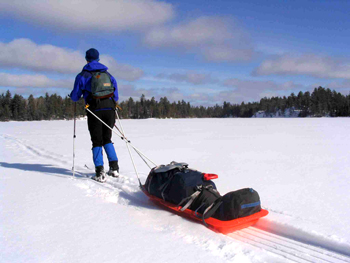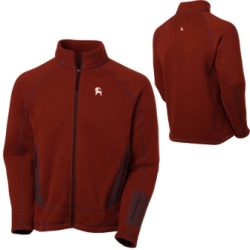Baked at Home, Munchies for the Road
mixes for bake-at-home energy bars, competing against the likes of
Clif and PowerBar in a market saturated with energy-food solutions.
So why would anyone want to spend the time baking an energy bar?
For me, the answer is embodied in one word: Taste. In my tests, the
company's (www.matisseandjacks.com) two current flavors -- Cranberry
Walnut Discovery and Chocolate Chip Amazon -- were exceptionally
yummy, beating out almost every energy bar I've ever tried, and
embodying a fresh-baked flavor that strikes as a cross between a good
scone and a granola bar.
Plus, Matisse & Jacks' TrailBlaze Bake-at-Home Oatmeal Energy Bars
(that's the full name!) are easy to make and economical, too. At $5.89
per box, the mixes make nine bars each, which equals to just 65 cents
per bar, a bargain compared to the industry-standard of about $2 per
bar.
Preparation is as easy as stirring in applesauce and yogurt then
baking the mix in a brownie pan.
Nutritionally, Matisse & Jacks bars have all the right statistics,
including about 180 calories per bar with 4.5 grams of fat, 9 grams of
protein, and 23 grams of carbohydrates. For comparison, an Oatmeal
Raisin Walnut Clif Bar contains 240 calories, 5 grams of fat, 10 grams
of protein, and 18 grams of carbs.
Matisse & Jacks bars have about half the sugar of a Clif Bar, at 11
grams, versus 20 grams in Clif's Oatmeal Raisin Walnut flavor.
Other healthy attributes Matisse & Jacks touts include the organic
whole-grain rolled oats used in all mixes; omega-3 fat at up to 650
milligrams per bar; and a commitment to no refined flours, no
preservatives, and no hydrogenated or fractionated oils in its
products.
The hassle factor is high with these bars, as baking, cooling,
cutting, and packaging are required before taking the bars outdoors
and on an adventure. Plus, they do not have the shelf-life -- or,
perhaps, "backpack-life" -- that competing pre-wrapped (and
preservative-enriched) energy bars embody. A Matisse & Jacks bar is
not something you keep in an emergency kit, or stowed away with your
camping equipment.
Instead, these bars are made to be baked, and then eaten fairly
quickly. They do fine sitting out or refrigerated for several days.
But to me that's missing the point: These are freshly baked
delectables, made to eat warm and right out of the oven, or very soon
thereafter.
(Stephen Regenold writes The Gear Junkie column for eight U.S. newspapers; see http://www.THEGEARJUNKIE.com for video gear reviews, a daily blog, and an archive of Regenold's work.)




 Subscribe to Stephen's RSS Feed
Subscribe to Stephen's RSS Feed
 Subscribe to Stephen's RSS Feed
Subscribe to Stephen's RSS Feed